Chunli Zhu
Unauthorized UAV Countermeasure for Low-Altitude Economy: Joint Communications and Jamming based on MIMO Cellular Systems
Oct 31, 2024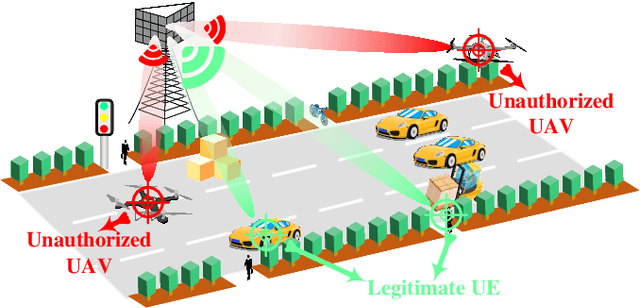
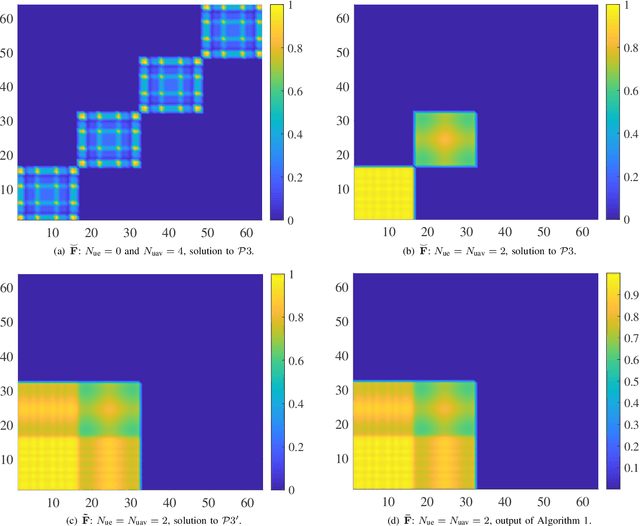
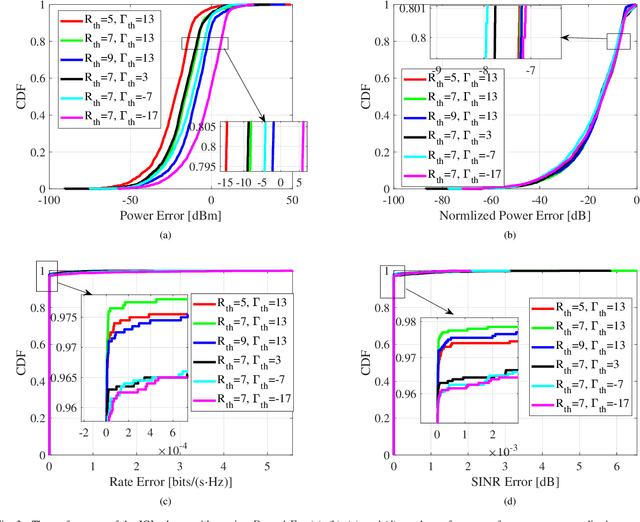
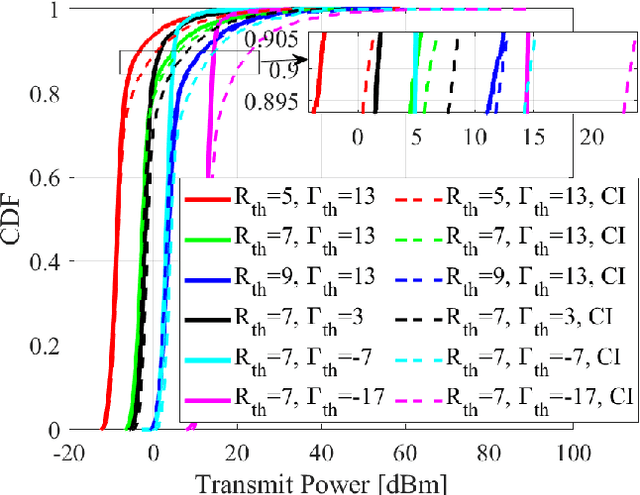
Abstract:To ensure the thriving development of low-altitude economy, countering unauthorized unmanned aerial vehicles (UAVs) is an essential task. The existing widely deployed base stations hold great potential for joint communication and jamming. In light of this, this paper investigates the joint design of beamforming to simultaneously support communication with legitimate users and countermeasure against unauthorized UAVs based on dual-functional multiple-input multiple-output (MIMO) cellular systems. We first formulate a joint communication and jamming (JCJ) problem, relaxing it through semi-definite relaxation (SDR) to obtain a tractable semi-definite programming (SDP) problem, with SDR providing an essential step toward simplifying the complex JCJ design. Although the solution to the relaxed SDP problem cannot directly solve the original problem, it offers valuable insights for further refinement. Therefore, we design a novel constraint specifically tailored to the structure of the SDP problem, ensuring that the solution adheres to the rank-1 constraint of the original problem. Finally, we validate effectiveness of the proposed JCJ scheme through extensive simulations. Simulation codes are provided to reproduce the results in this paper: https://github.com/LiZhuoRan0. The results confirm that the proposed JCJ scheme can operate effectively when the total number of legitimate users and unauthorized UAVs exceeds the number of antennas.
Enhancing Emergency Decision-making with Knowledge Graphs and Large Language Models
Nov 15, 2023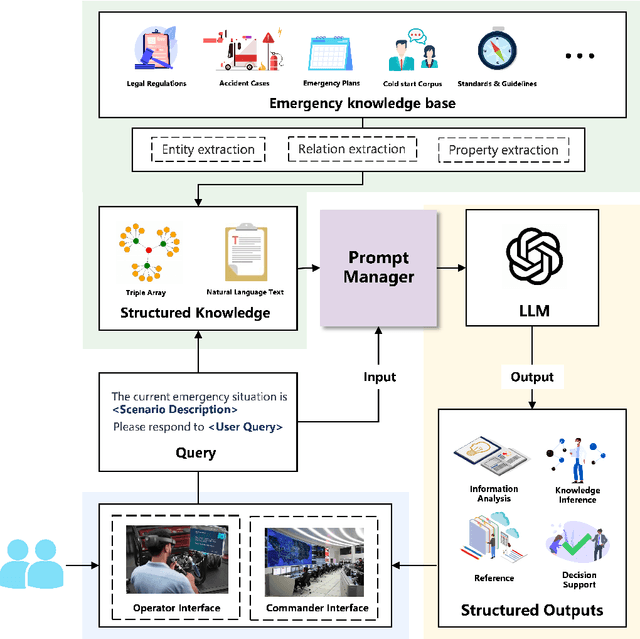

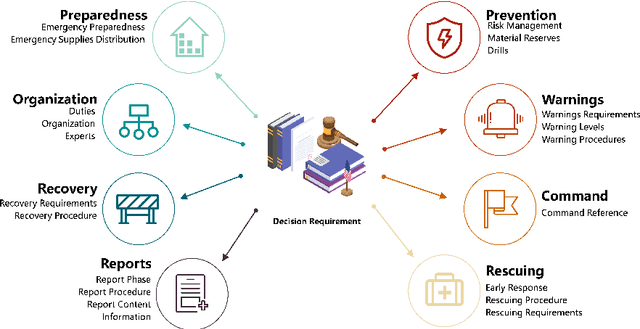

Abstract:Emergency management urgently requires comprehensive knowledge while having a high possibility to go beyond individuals' cognitive scope. Therefore, artificial intelligence(AI) supported decision-making under that circumstance is of vital importance. Recent emerging large language models (LLM) provide a new direction for enhancing targeted machine intelligence. However, the utilization of LLM directly would inevitably introduce unreliable output for its inherent issue of hallucination and poor reasoning skills. In this work, we develop a system called Enhancing Emergency decision-making with Knowledge Graph and LLM (E-KELL), which provides evidence-based decision-making in various emergency stages. The study constructs a structured emergency knowledge graph and guides LLMs to reason over it via a prompt chain. In real-world evaluations, E-KELL receives scores of 9.06, 9.09, 9.03, and 9.09 in comprehensibility, accuracy, conciseness, and instructiveness from a group of emergency commanders and firefighters, demonstrating a significant improvement across various situations compared to baseline models. This work introduces a novel approach to providing reliable emergency decision support.
Weighted Encoding Optimization for Dynamic Single-pixel Imaging and Sensing
Jan 08, 2022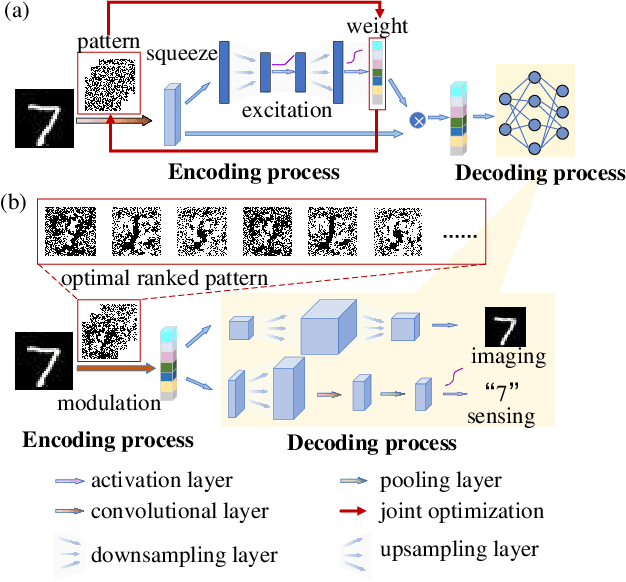
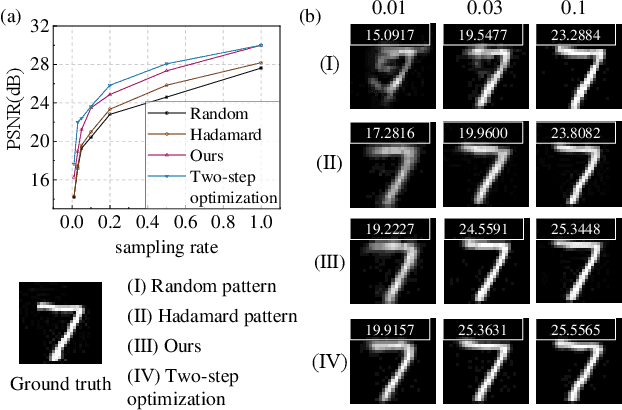
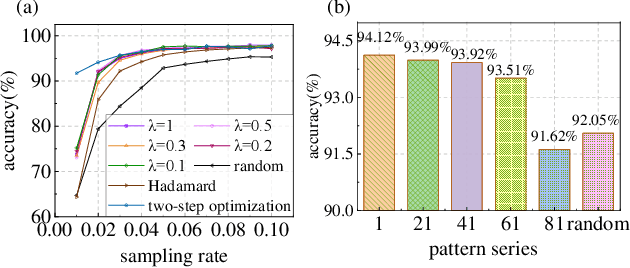

Abstract:Using single-pixel detection, the end-to-end neural network that jointly optimizes both encoding and decoding enables high-precision imaging and high-level semantic sensing. However, for varied sampling rates, the large-scale network requires retraining that is laboursome and computation-consuming. In this letter, we report a weighted optimization technique for dynamic rate-adaptive single-pixel imaging and sensing, which only needs to train the network for one time that is available for any sampling rates. Specifically, we introduce a novel weighting scheme in the encoding process to characterize different patterns' modulation efficiency. While the network is training at a high sampling rate, the modulation patterns and corresponding weights are updated iteratively, which produces optimal ranked encoding series when converged. In the experimental implementation, the optimal pattern series with the highest weights are employed for light modulation, thus achieving highly-efficient imaging and sensing. The reported strategy saves the additional training of another low-rate network required by the existing dynamic single-pixel networks, which further doubles training efficiency. Experiments on the MNIST dataset validated that once the network is trained with a sampling rate of 1, the average imaging PSNR reaches 23.50 dB at 0.1 sampling rate, and the image-free classification accuracy reaches up to 95.00\% at a sampling rate of 0.03 and 97.91\% at a sampling rate of 0.1.
Image-free multi-character recognition
Dec 20, 2021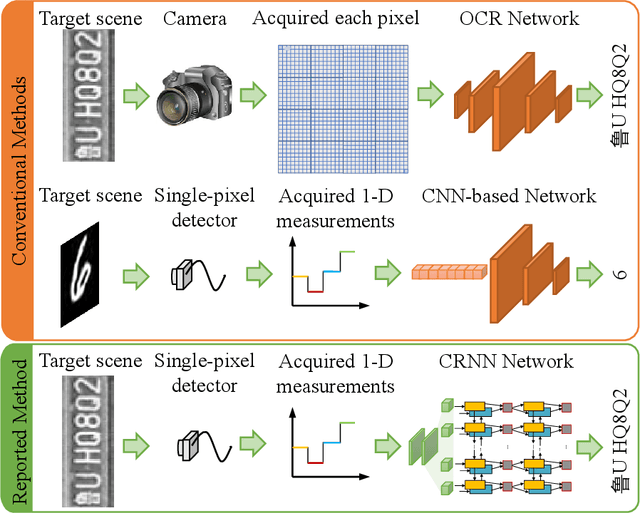
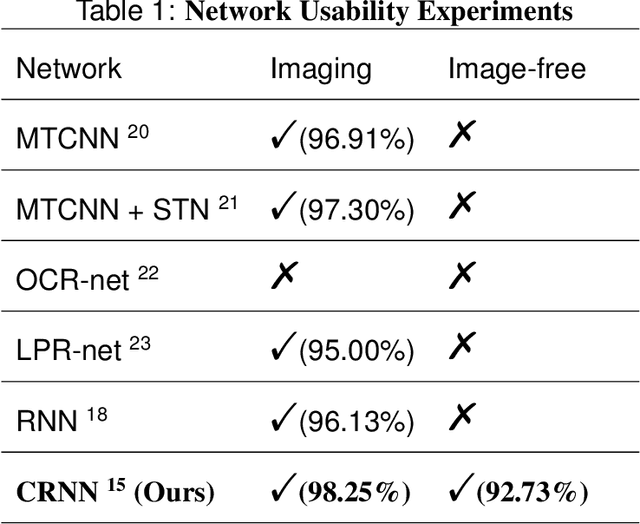
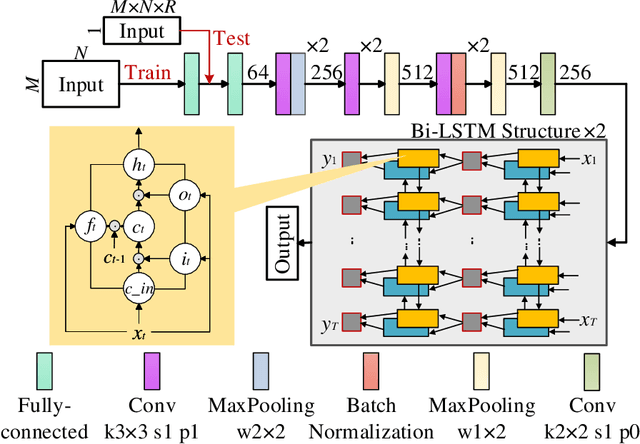
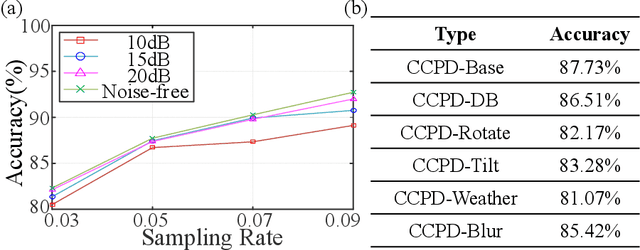
Abstract:The recently developed image-free sensing technique maintains the advantages of both the light hardware and software, which has been applied in simple target classification and motion tracking. In practical applications, however, there usually exist multiple targets in the field of view, where existing trials fail to produce multi-semantic information. In this letter, we report a novel image-free sensing technique to tackle the multi-target recognition challenge for the first time. Different from the convolutional layer stack of image-free single-pixel networks, the reported CRNN network utilities the bidirectional LSTM architecture to predict the distribution of multiple characters simultaneously. The framework enables to capture the long-range dependencies, providing a high recognition accuracy of multiple characters. We demonstrated the technique's effectiveness in license plate detection, which achieved 87.60% recognition accuracy at a 5% sampling rate with a higher than 100 FPS refresh rate.
U-shape Transformer for Underwater Image Enhancement
Dec 03, 2021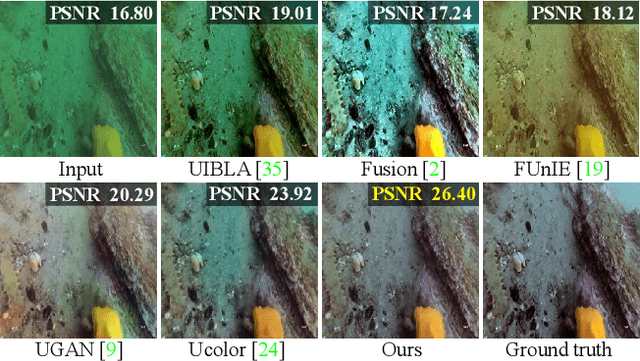
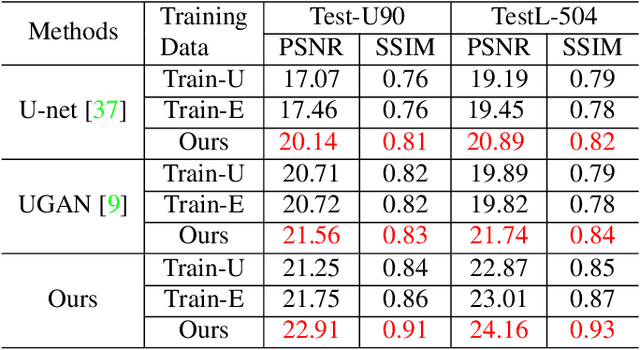
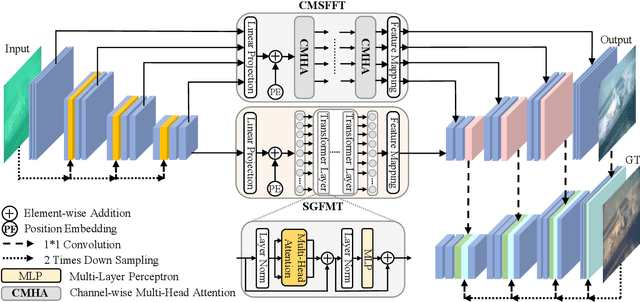
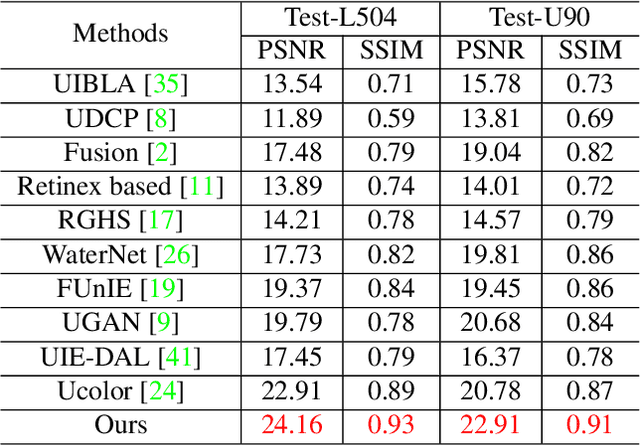
Abstract:The light absorption and scattering of underwater impurities lead to poor underwater imaging quality. The existing data-driven based underwater image enhancement (UIE) techniques suffer from the lack of a large-scale dataset containing various underwater scenes and high-fidelity reference images. Besides, the inconsistent attenuation in different color channels and space areas is not fully considered for boosted enhancement. In this work, we constructed a large-scale underwater image (LSUI) dataset including 5004 image pairs, and reported an U-shape Transformer network where the transformer model is for the first time introduced to the UIE task. The U-shape Transformer is integrated with a channel-wise multi-scale feature fusion transformer (CMSFFT) module and a spatial-wise global feature modeling transformer (SGFMT) module, which reinforce the network's attention to the color channels and space areas with more serious attenuation. Meanwhile, in order to further improve the contrast and saturation, a novel loss function combining RGB, LAB and LCH color spaces is designed following the human vision principle. The extensive experiments on available datasets validate the state-of-the-art performance of the reported technique with more than 2dB superiority.
 Add to Chrome
Add to Chrome Add to Firefox
Add to Firefox Add to Edge
Add to Edge